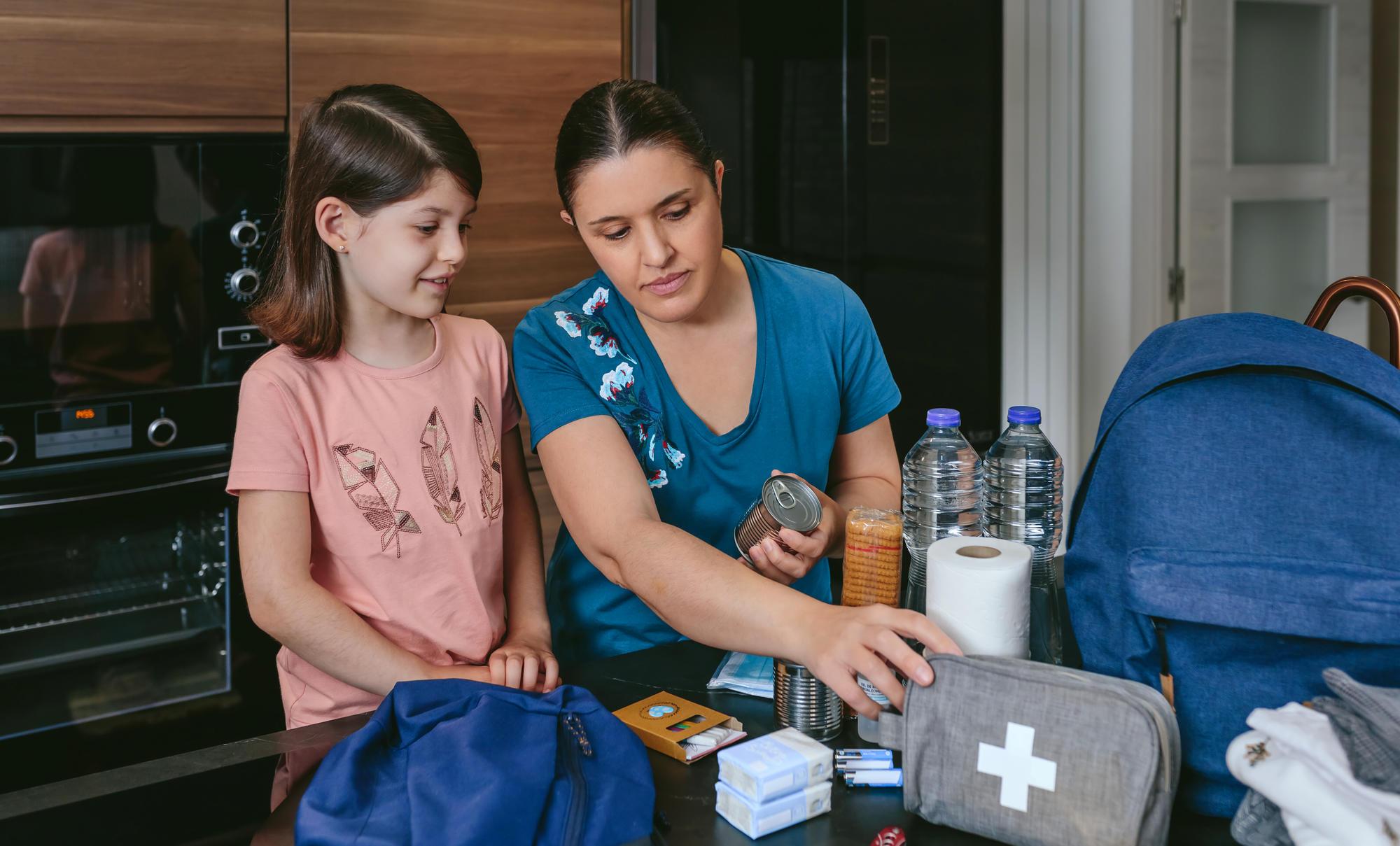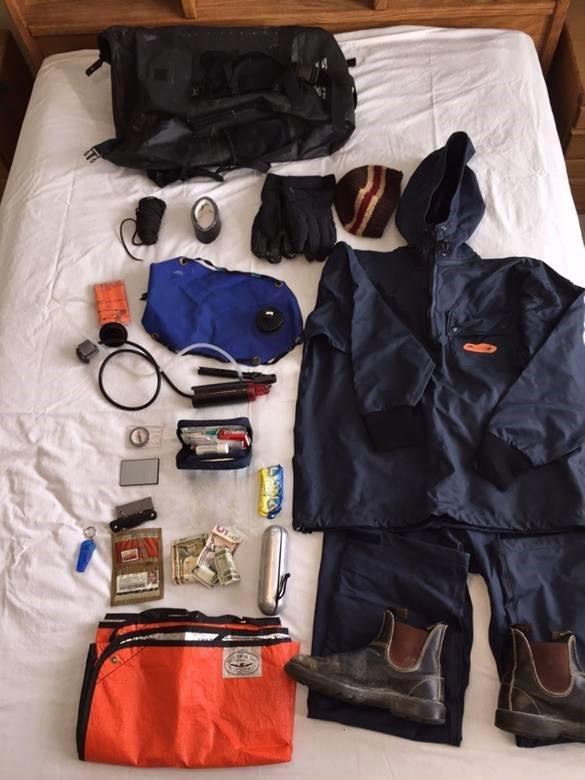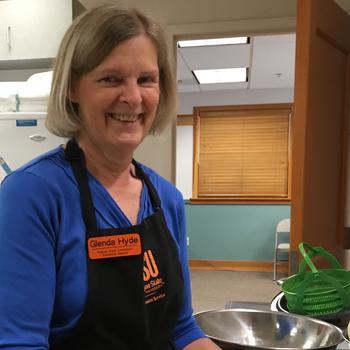Being prepared for what life brings your way — everything from a vehicle breakdown to a natural disaster — means having the items that meet your basic needs at hand. Emergency kits should include essentials that will help sustain you and your family for as long as you need or until help arrives. That could be a few days, a few weeks or even months. Consider what you might need in the event you are isolated in your home without power or utilities, need to evacuate with little notice or are stranded on a roadside.
All emergency kits should contain the basic needs for life: food, water, warmth, first-aid supplies, medications, medical equipment and protection from the elements. You also need alternative lighting and materials for cooking, sanitation and waste management. You will likely need more than one kit. Each kit should contain items for its specific location or use. Make sure your emergency kit meets the unique needs of your family.
One emergency local officials are preparing for is the Cascadia Subduction Zone Event. We do not know when the next Cascadia Subduction Zone earthquake and resulting tsunami will occur. Scientists say there is 37% chance that an earthquake with a magnitude of 8.0 or higher will occur along this fault in the next 50 years. People who live, commute and travel through these areas need to consider all the places where they spend time and develop emergency kits for each.
The home
In the immediate aftermath of the Cascadia event, help will not be readily available. Even with all the planning, securing help will take time. Be prepared to help yourself and your family. Neighbors helping neighbors is a good strategy. Plan to share skills and some resources during your response and recovery.
Household
Your home is the primary area where preparedness needs to happen. Emergency agencies agree that we all need to be able to survive without modern conveniences for a minimum of three days. In the case of the Cascadia Subduction Zone event, the suggestion is two weeks, with many local emergency managers suggesting at least four weeks until emergency supplies can be begin to be distributed. This event has the potential of knocking out our entire modern infrastructure, including utilities (power, water, sanitation) and transportation (roads, bridges, fuel, supply chain disruption). It could leave us without the ability to run to the store to purchase what we need or even to live life as we used to.
Go bag
In addition to being prepared throughout the house, develop a grab-and-go kit to store near an exit from the home. As soon as the shaking stops and you can leave the protected spot where you took refuge, leave the home and take the go bag with you.
If you live in the tsunami inundation zone, an area that is at risk of flooding or if your home is severely damaged in the quake, this go bag is what will sustain you until outside help can arrive. Think about what you will need to live on for a minimum of three days. That is what needs to be in this kit.
The primary concern with the go bag is weight. Think of lightweight ways to include water, food, first-aid supplies and shelter from the elements. Water will be hard to include in the amounts needed for three days, so consider a water purifier designed for backpackers that removes 99.9% of all contaminants. These devices allow you to use nonpotable water from ponds, creeks and rivers for drinking, cooking and personal sanitation. Do not drink or clean with floodwaters.
For food, consider weight — perhaps tuna in a foil pouch and chili in a box rather than a can. Also include a soft-sided, comprehensive first-aid kit and a complete change of clothes. When developing the go bag, consider items used when backpacking — a lightweight, compact camp stove and mess kit; emergency blankets; lightweight sleeping bag; tarp and rope for shelter or a lightweight tent; and a multi-tool that combines a knife, saw, etc., in one tool. Also include wind-up or battery-powered LED flashlights. All of these items will need to fit into a carrier that will allow your hands to be free. Consider using a backpack-style carrier.
The vehicle
Many people spend a fair amount of time in their vehicles just getting to and from work. We also take road trips to visit friends and relatives. The Cascadia earthquake could occur while on the road. In addition, other emergencies such as severe weather, running off the road in a remote location or even getting lost are possible. A car survival kit should include all the same basic survival items already discussed plus additional items.
The focus of this kit is durability and sustainability. It will be subjected to climate changes. Change out the water every six months, especially if you store the water in plastic containers. Extreme weather changes can affect the quality of the water by allowing free plastics to leach into the drinking water. Consider storing water in stainless steel containers, leaving room for the water to freeze during winter weather. Stainless steel can be placed on a hot motor to warm (or thaw) the water and can be used to heat soup or other ready-to-eat food where plastic and glass cannot.
Consider extreme temperature changes when choosing food. Commercially canned products can safely handle these extremes. In addition, commercially canned soup can be eaten cold or heated in and eaten directly from the can.
Again, remember the first-aid kit and protection from the elements including a sleeping bag or blankets, and a complete change of clothes (including weatherproof jacket, hat, pants and shoes or boots). If possible, use the vehicle as shelter.
Additional items include fire-starting supplies, road flares, SOS signaling devices, flashlights, solar chargers, and notepad and pen or pencil for leaving notes. Keep your gas tank at least half full.
The office or workplace
Every office or workplace should have an emergency plan. Such plans usually consider communication and the health and safety of employees. But often, they do not include emergency food and water. Consider expanding that plan to include food and water in the event employees must shelter in place at work. Then personally add your own “under desk” emergency kit. The desk is often where we take refuge during the earth’s shaking, so a small kit is important. It should include a bottle of water, comfort food and a protein bar, an emergency whistle (in case falling objects render you trapped), a dust mask, a small first-aid kit (the office should have a large, comprehensive kit), and a list of emergency and family phone numbers. Include walking shoes.
School
Schools have plans for keeping students as safe and secure as possible. It is the responsibility of parents or guardians to know the school’s plan and to develop a family reunification plan with the school’s plan in mind. If you are evacuating to an identified community assembly area along the coast, do not leave this area for 24 hours. Wave surges — some larger than the original tsunami — are expected. Plan ahead to reunite with your loved ones the next day.
Due to the emotional stress involved with disasters, parents should consider creating a small kit for each of their children. A shoebox or simple backpack works well for this, as they are easy to store in cubbies and lockers. The focus of this kit is the emotional well-being of the child. This kit should include a bottle of water, protein bar, small first-aid kit and a copy of the family communication plan, including emergency phone numbers. It should also include a favorite snack, a photo of parents or the family to provide comfort and expedite reunification, and a familiar game or toy such as a stuffed animal for younger kids or a deck of cards for older ones. Keep photos of you with your children and pets to help facilitate reunification if you become separated during the disaster.
We know a catastrophic earthquake will occur sometime in the future, we just do not know when. Ready-to-use emergency kits are key elements of resiliency and survival, ensuring we can meet our basic needs.
Resources
- No Power? No Problem: Tips to Help You Thrive in the Face of Disaster, EM 9778, Oregon State University Extension.
- Survival Basics: Water, EM 9285, Oregon State University Extension.
- Preparing for the Cascadia Subduction Zone Event. Online learning system. Oregon State University Extension.
- Survival Basics: Food, EM 9331, Oregon State University Extension.
- Survival Basics: Sanitation and Waste Management, EM 9334, Oregon State University Extension.
Acknowledgment
Project supported by National Institute of Food and Agriculture Smith Lever Special Needs Competitive Grants Program (Award# 2018-41210-28702).



